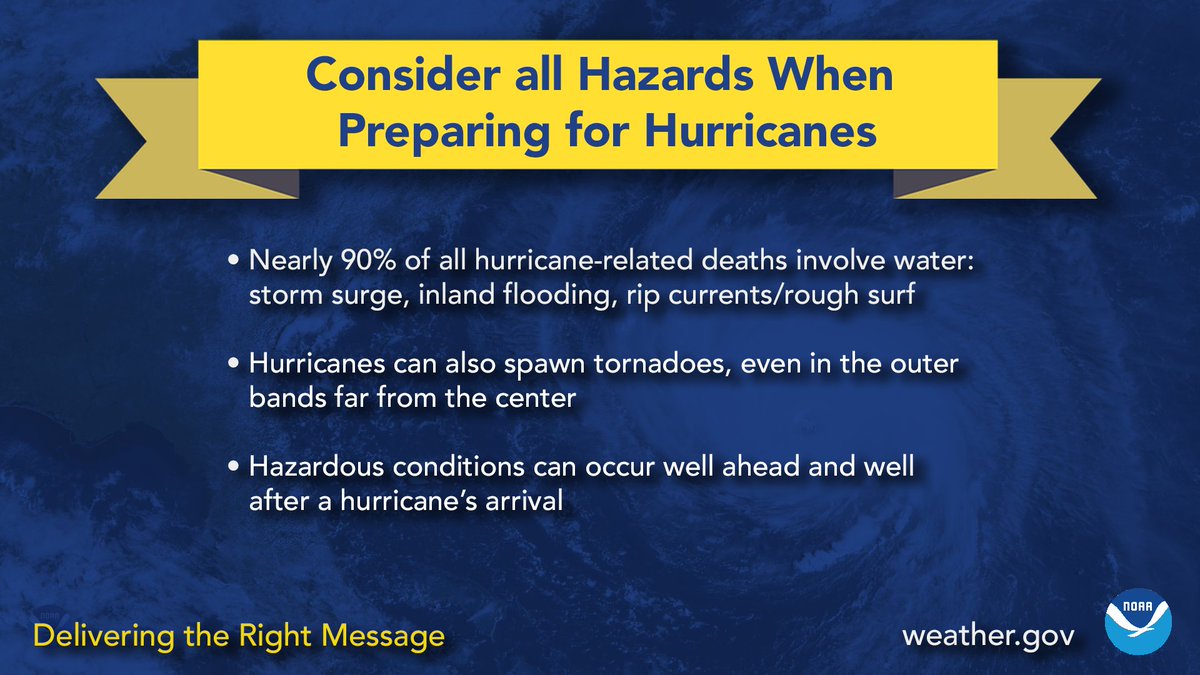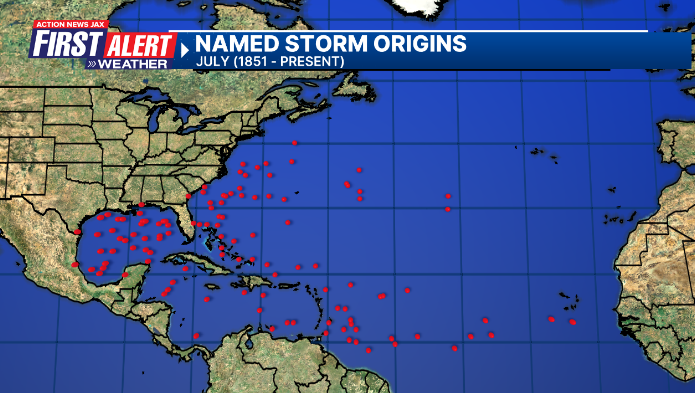Jacksonville, Fl. — THE TROPICS:
***** ALWAYS CHECK & RE-CHECK THE LATEST FORECAST & UPDATES! ****
Tropics threats/impacts for Jacksonville/NE Florida/SE Georgia: As low pressure develops east & northeast of Jacksonville through the weekend, there will be an increased rip current risk at area beaches. Some rain may rotate across the local area on the low’s backside, especially Saturday but significant impacts from what looks to be a weak system are *not* expected. Check back for updated forecasts.
The Atlantic Basin Overview:
The Atlantic hurricane season is June 1st through Nov. 30th.
A piece of an upper level trough of low pressure is “pinching off” over the next several days over the Southeast U.S. in tandem with where a weak front will stall out. This combination will likely help develop weak surface low pressure along the front just east/northeast of Jacksonville over the next few days.
The NHC outlined a ‘yellow area’ (low chance for development) in their 8am Sunday tropical weather outlook that has since been increased to ‘orange’ (medium chance) & may very well end up ‘red’ (high chance). But no big changes in my thinking in what looks to be a weak area of low pressure that could become a tropical depression or - I suppose - a weak tropical storm (given the NHC inclination to quickly upgrade so far this season, I guess it’s ‘likely’).
Recent trends in the models + the location of the axis of the upper level trough suggest the most likely location for low pressure will be east & northeast of Florida & eventually close to the Carolina coast. If accurate, most of the Fl. Peninsula would be on the west/weaker side of the low. With or without a true tropical system, enhanced rainfall is likely across Florida & nearby areas of the gulf coast through the 4th of July weekend. Onshore flow - winds out of the northeast - will increase the rip current risk at local beaches - always swim & surf with a buddy & close to a lifeguard as one can.
Impacts will extend up the east coast through at least the coast of the Carolina’s with a strong onshore flow, rough seas & surf, a gusty breeze & some increase in rainfall.
The low should start to accelerate to the northeast & away from the U.S. early next week.


7-day rainfall forecast:

European & GFS model rainfall forecasts for NE Fl. & SE Ga. through Sunday evening:



The first month of the ‘25 Atlantic hurricane season is in the books. There were (supposedly) two named storms. Andrea over the North Central Atlantic with no land impacts & Barry in the Southwest Gulf which moved into Mexico as a depression. Global tropical activity remains well below average.


‘Velocity potential anomalies’ below. shows “Rising” air (green lines) equates with an uptick in overall convection. With rising air, conditions are generally more favorable for tropical development. Where there are brown lines, the air is generally sinking & is often less conducive to tropical cyclones (though not impossible to have development).
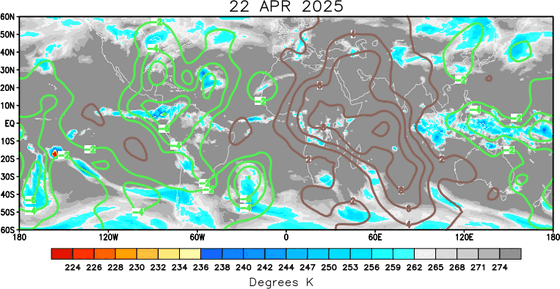
The “Buresh Bottom Line”: Always be prepared!.....First Alert Hurricane Preparation Guide... City of Jacksonville Preparedness Guide... Georgia Hurricane Guide.
STAY INFORMED: Get the * FREE * First Alert Weather app
FREE NEWS UPDATES, ALERTS: Action News Jax app for Apple | For Android
WATCH “Preparing for the Storm”
WATCH “The Ins & Outs of Hurricane Season”
READ the First Alert Hurricane Center “Preparation Guide”
LISTEN “First Alert Weather: Preparing for the Storm”
Federal Alliance for Safe Homes (FLASH) * here *.
REMEMBER WHEN A TROPICAL STORM OR HURRICANE IS APPROACHING: Taping windows is *not* recommended & will not keep glass from breaking. Instead close curtains & blinds.
Realize the forecast cone (”cone of uncertainty”) is the average forecast error over a given time - out to 5 days - & *does not* indicate the width of the storm &/or where damage might occur.
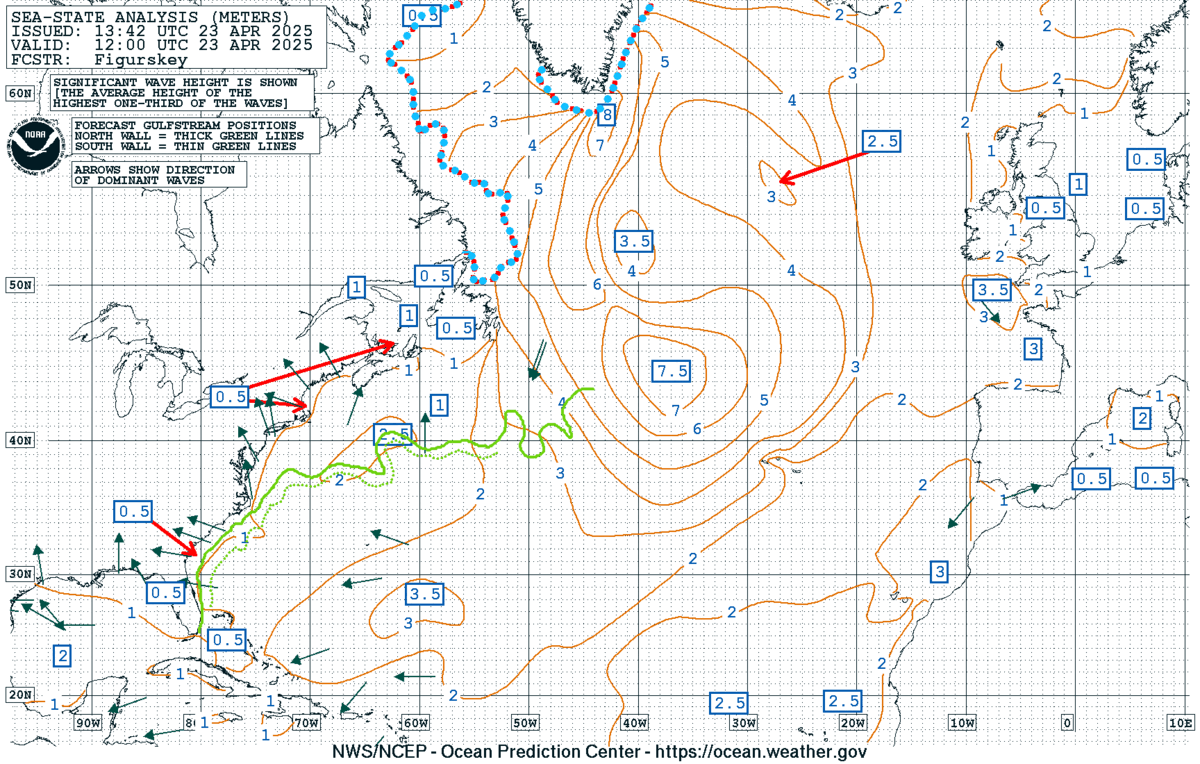
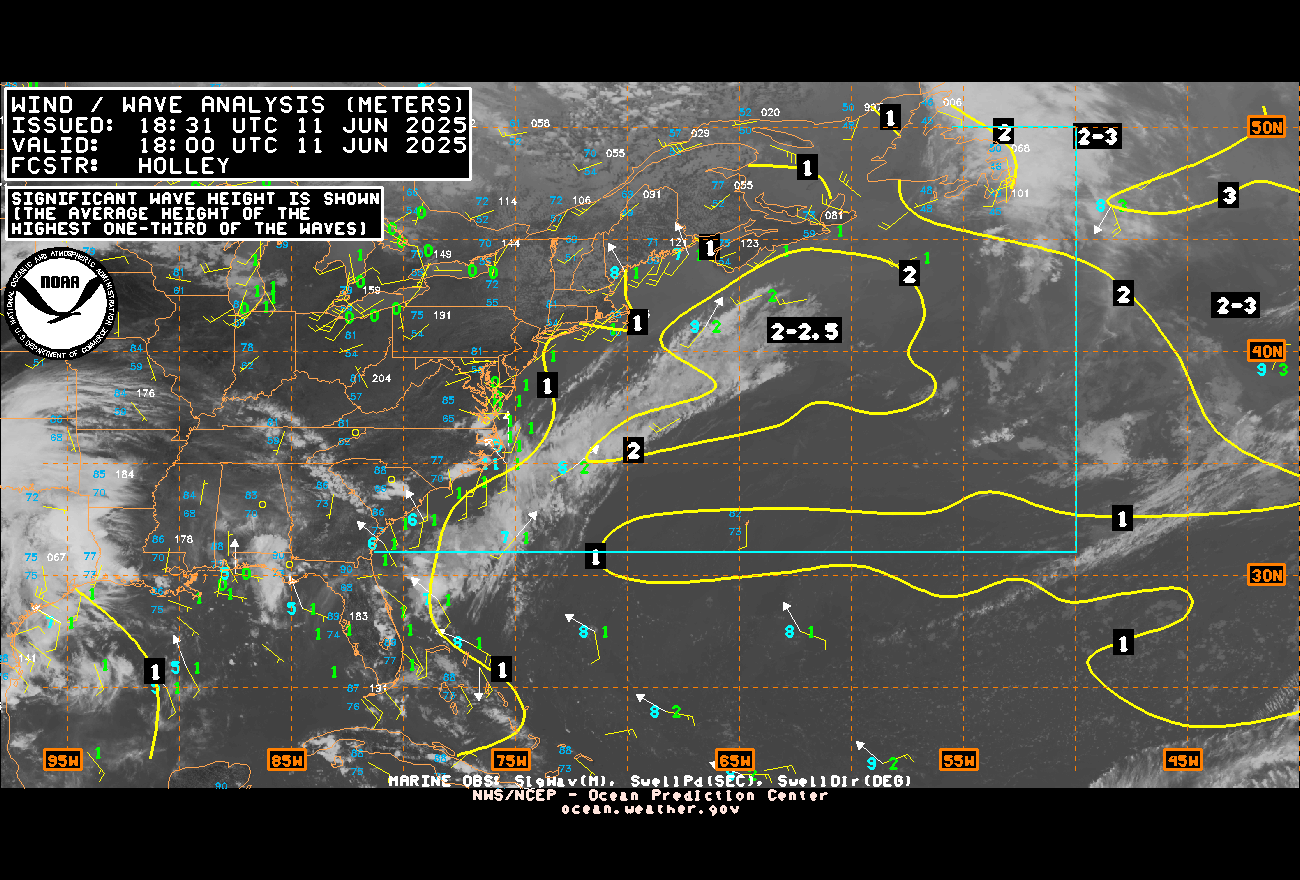




Water vapor loop (dark blue/yellow is dry mid & upper level air):

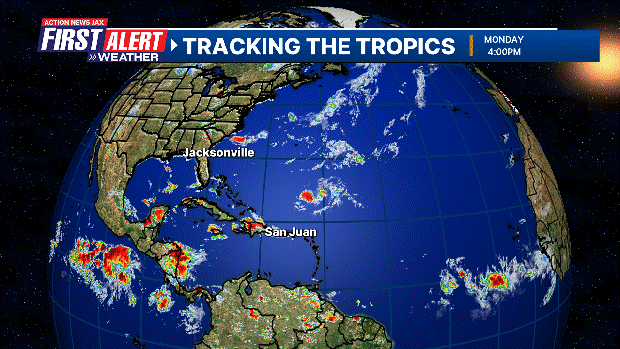
July Atlantic tropical cyclone origins:
Averages below based on climatology for the Atlantic Basin for July:
Wind shear (red - strong shear; green - low shear). Shear is typically strong to start the hurricane season:



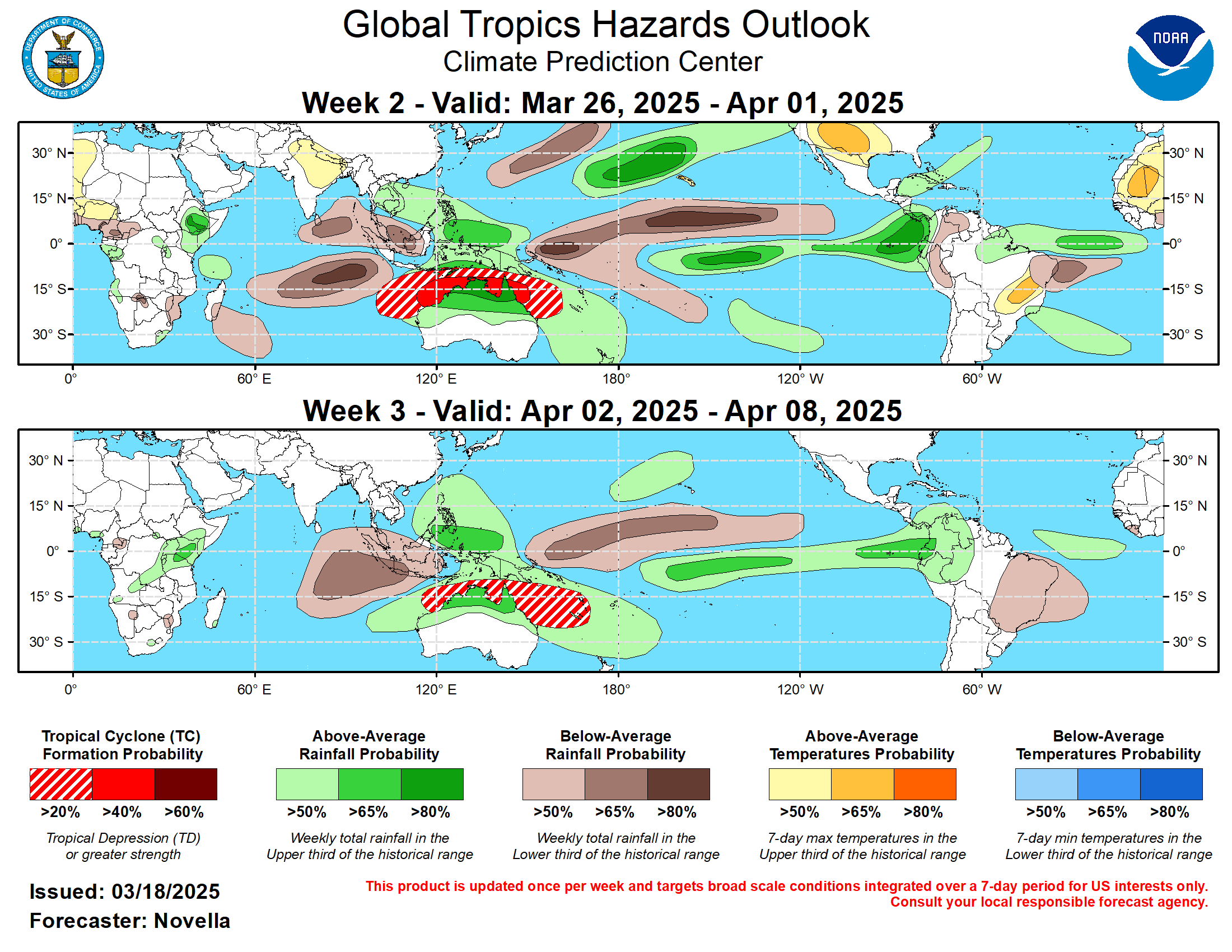
Saharan dust spreads west each year from Africa driven by the prevailing winds (from east to west over the Atlantic). Dry air = yellow/orange/red/pink. Widespread dust is indicative of dry air that *can* interfere with the development of tropical cyclones. However, sometimes “wanna’ be” waves will just wait until they get to the other side of - or away from - the dust plume then try to develop if other conditions are favorable (we saw this with Beryl & Debby last year). It’s my personal opinion that there is way too much “hoopla” about the presence of Saharan dust & how it relates to tropical cyclones. In any case, the peak of Saharan dust typically is in June & July, & we are indeed seeing a large “blobs” of Saharan dust over the Central & Eastern Atlantic that’s thinning with westward extent but enough of it to make for hazy skies across the Caribbean & - at times - across parts of Florida.
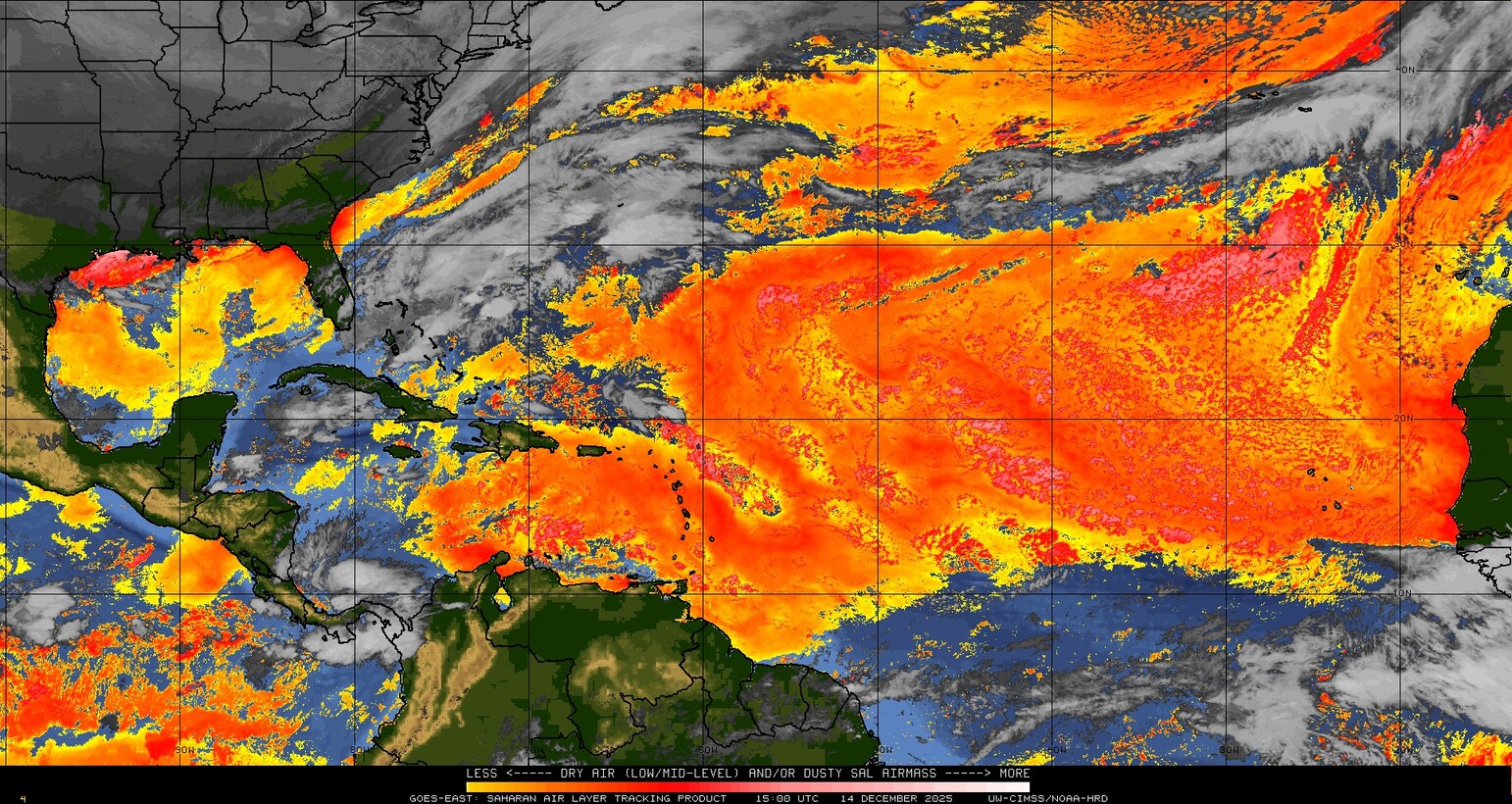
2025 names..... “Chantal” is the next name on the Atlantic list (names are picked at random by the World Meteorological Organization... repeat every 6 years). Historic storms are retired [Florence & Michael in ’18... Dorian in ’19 (the last time this year’s list was used) ... Laura, Eta & Iota in ‘20 ... Ida in ‘21 ... Fiona & Ian in ‘22... no names were retired in ‘23 for the first time since 2014... & Beryl, Helene & Milton last year in 2024]). The WMO decided - beginning in 2021 - that the Greek alphabet will be no longer used & instead there will be a supplemental list of names if the first list is exhausted (has only happened three times - 2005, 2020 & 2021). The naming of tropical cyclones began on a consistent basis in 1953. More on the history of naming tropical cyclones * here *.

Hurricane season climatology:
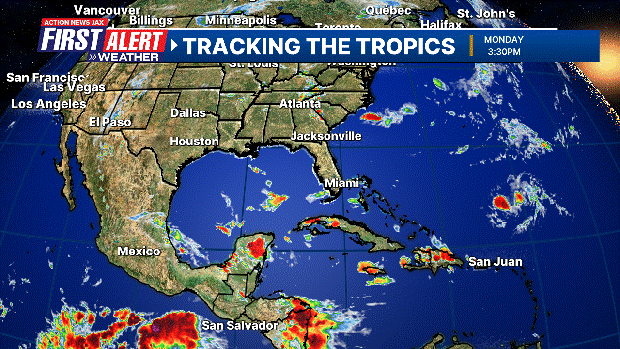



East Atlantic:




Mid & upper level wind shear (enemy of tropical cyclones) analysis (CIMMS). The red lines indicate strong shear:
Water vapor imagery (dark blue indicates dry air):

Deep oceanic heat content over the Gulf, Caribbean & tropical Atlantic. The colors will brighten greatly as the water warms to greater depths deeper into the season. It’s worth noting that the deep oceanic heat content right now is not as high as this time last year.

Sea surface temps.:

Sea surface temp. anomalies:

SE U.S. surface map:
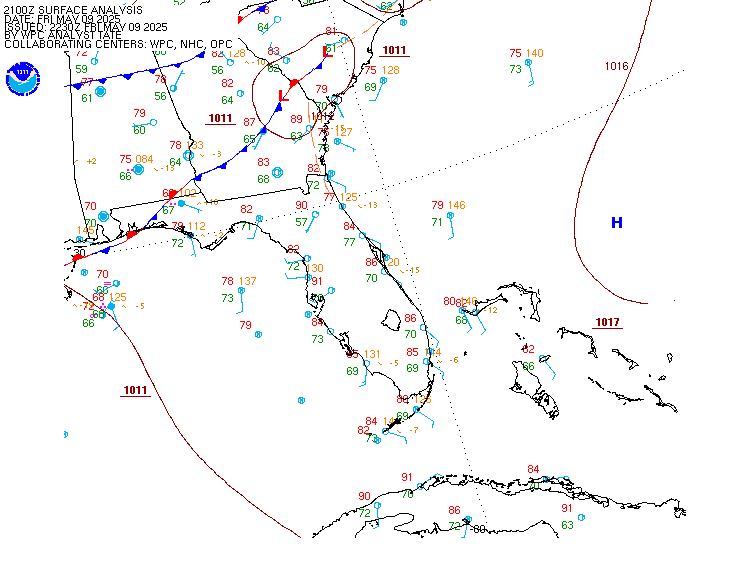
Surface analysis centered on the tropical Atlantic:
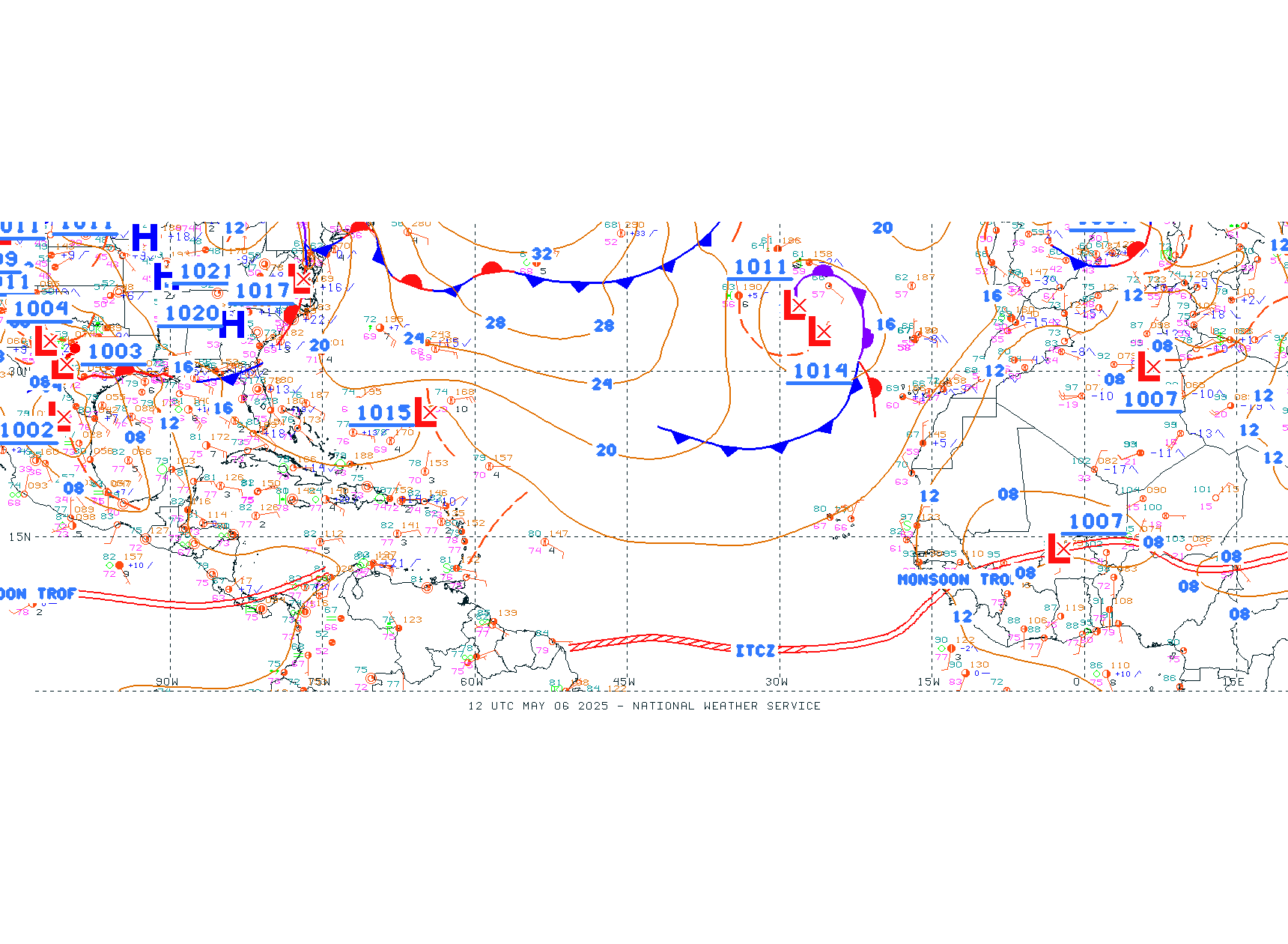
Surface analysis of the Gulf:

Caribbean:

Atlantic Basin wave period forecast for 24, 48, 72 & 96 hours respectively:
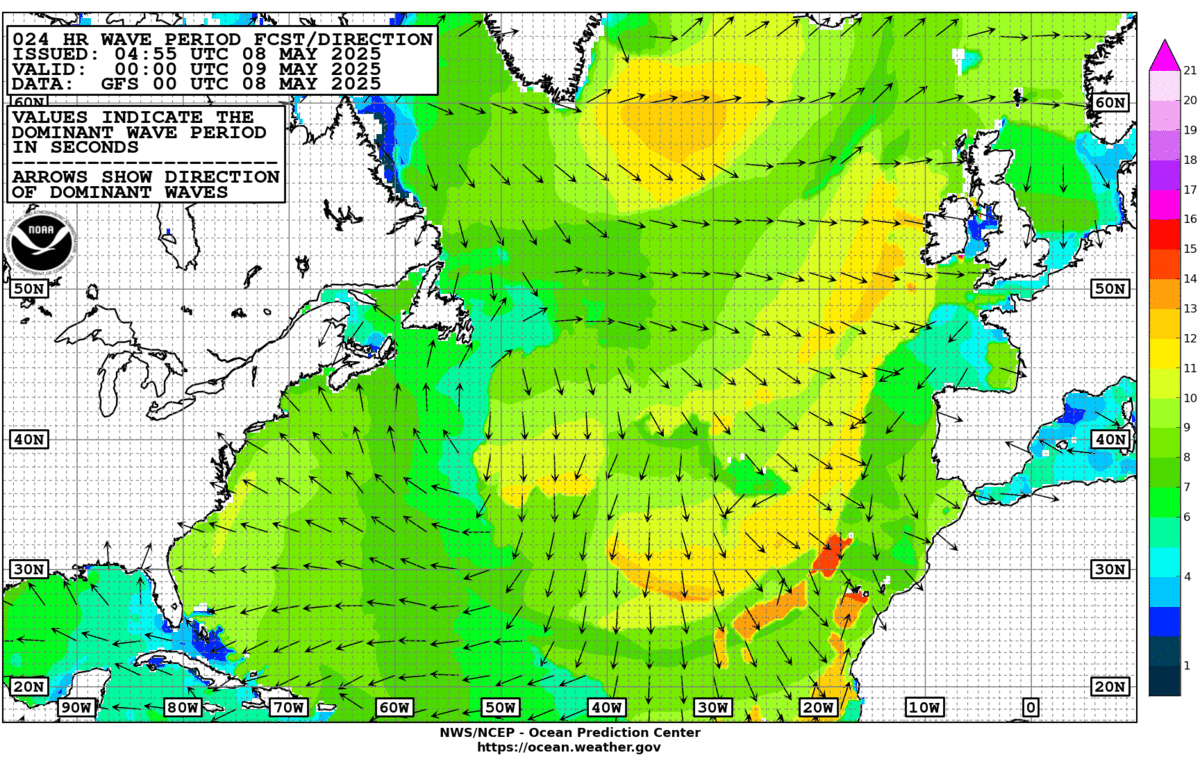
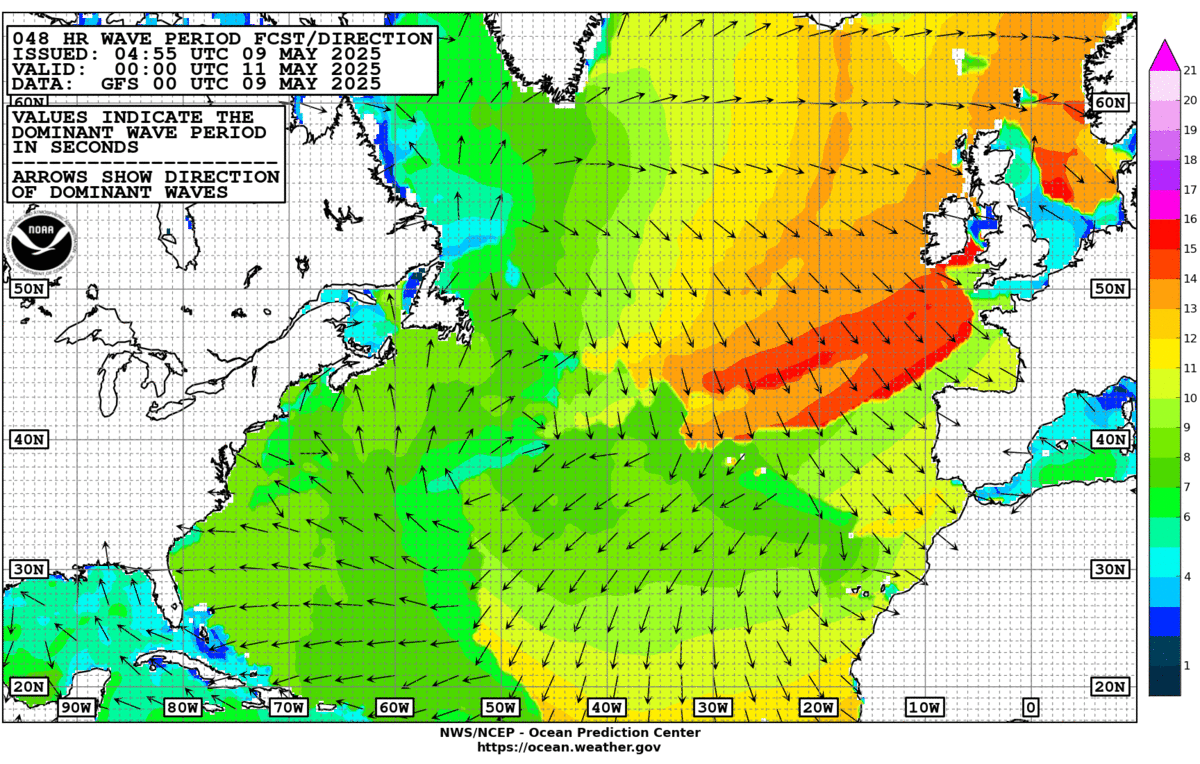
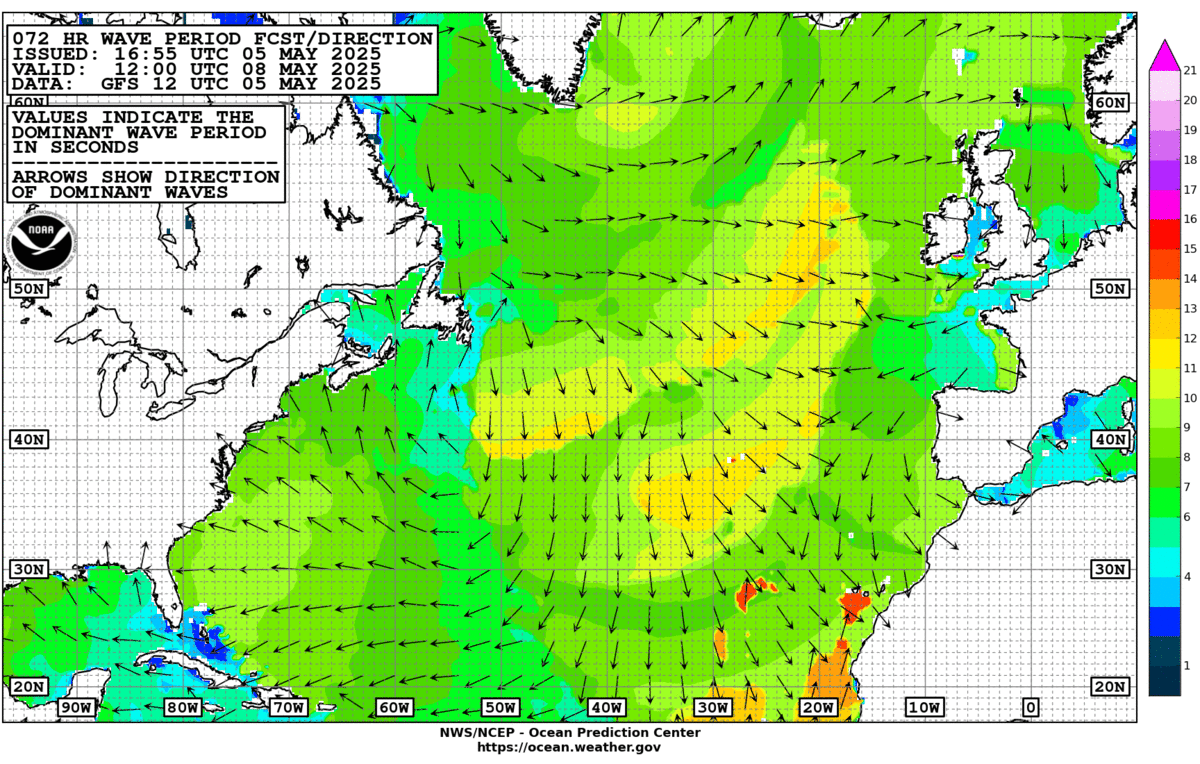
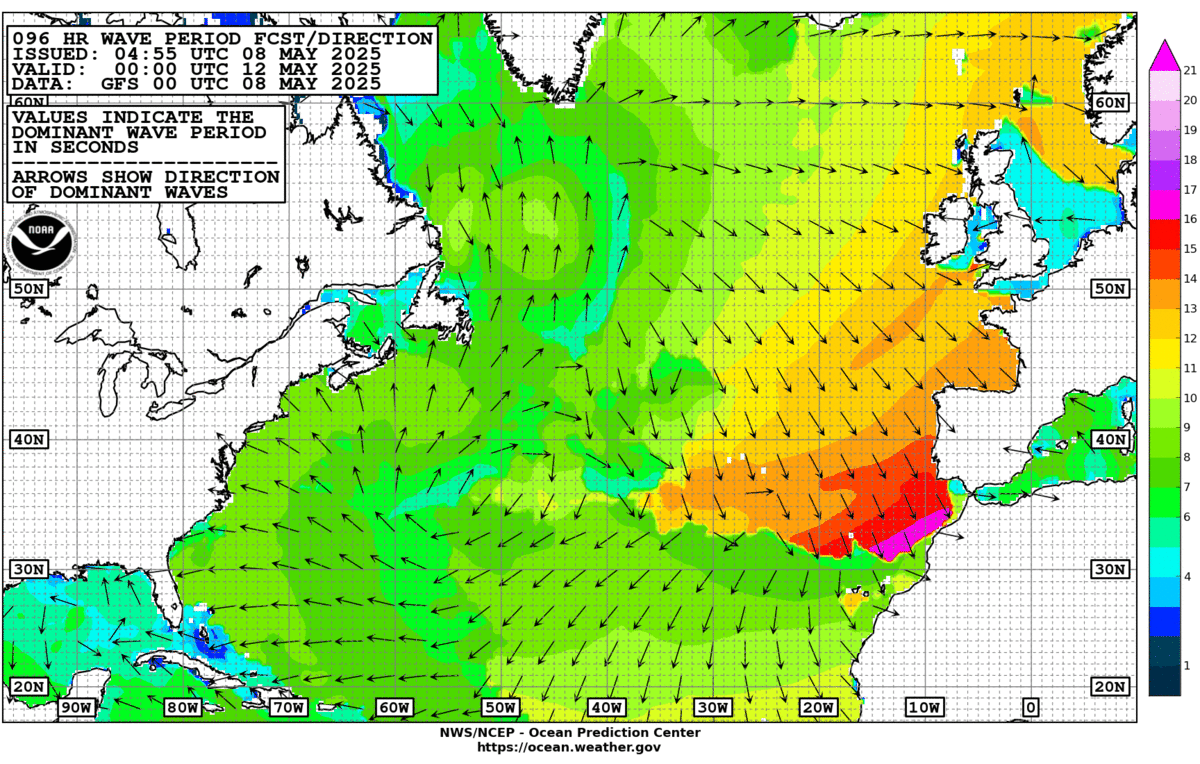

East & Central Pacific:
Flossie is weakening & will soon dissipate:
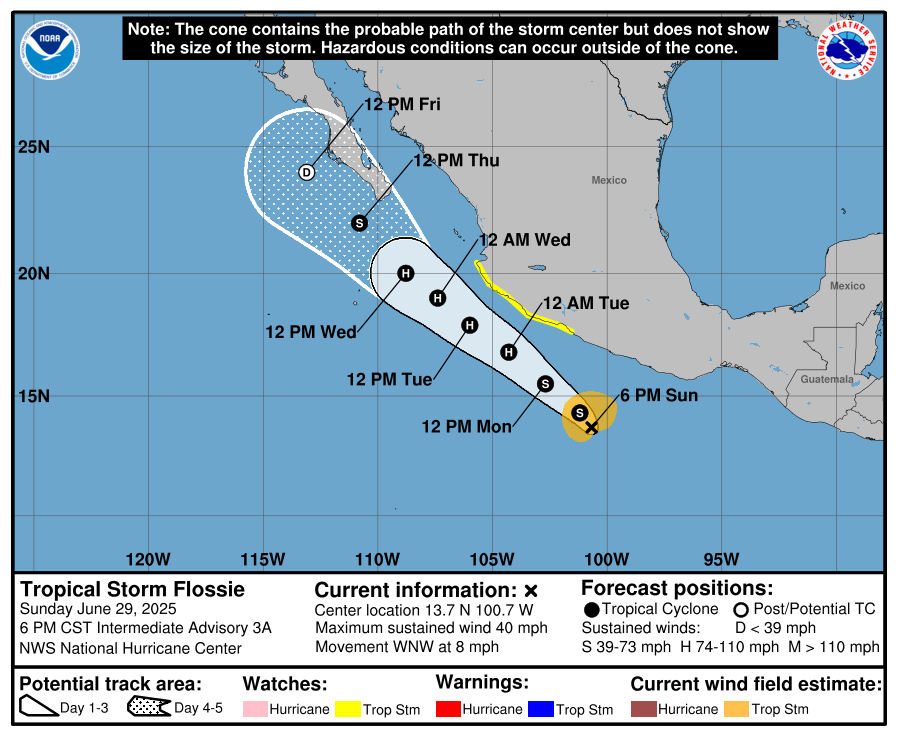

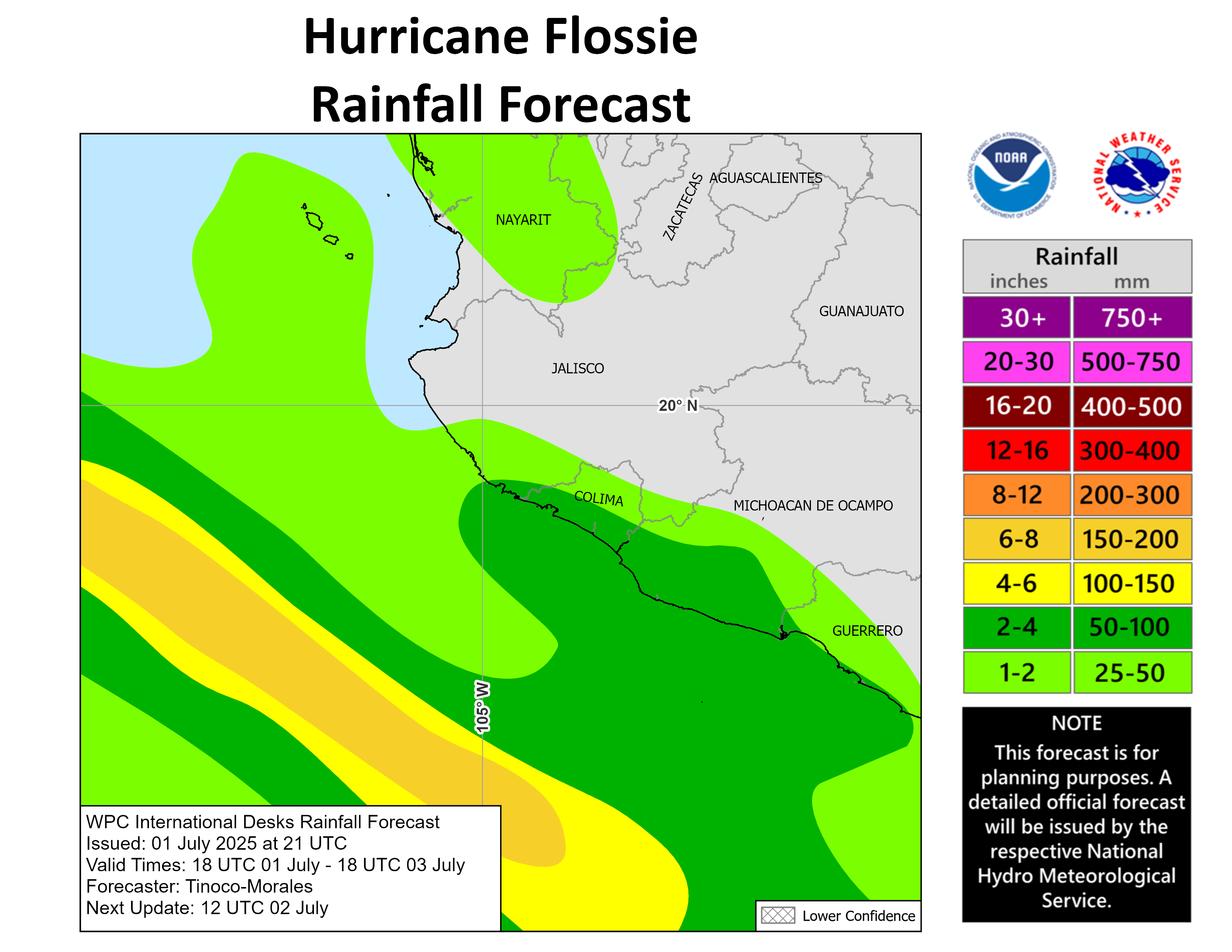



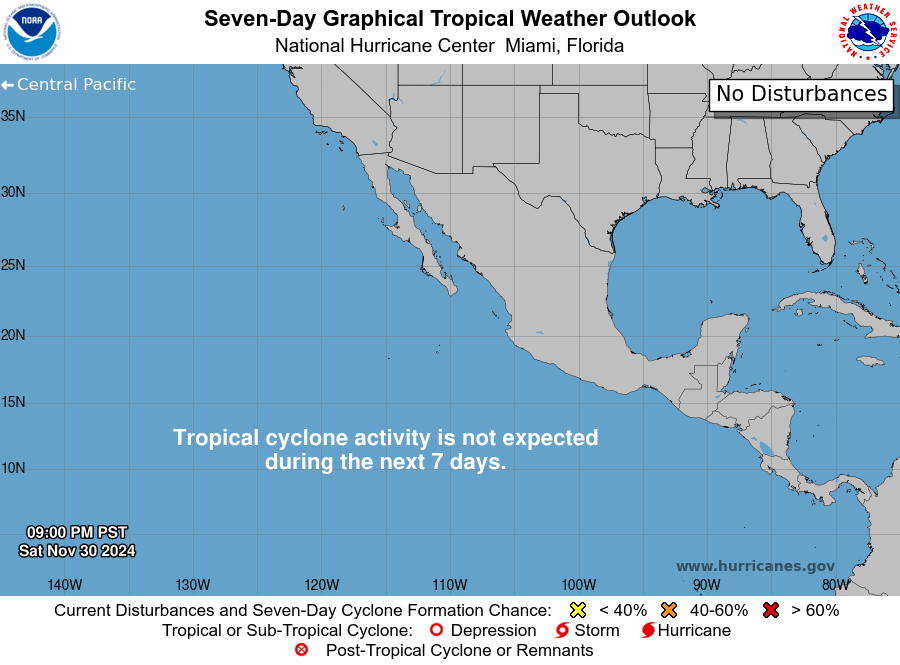
Central Pacific:
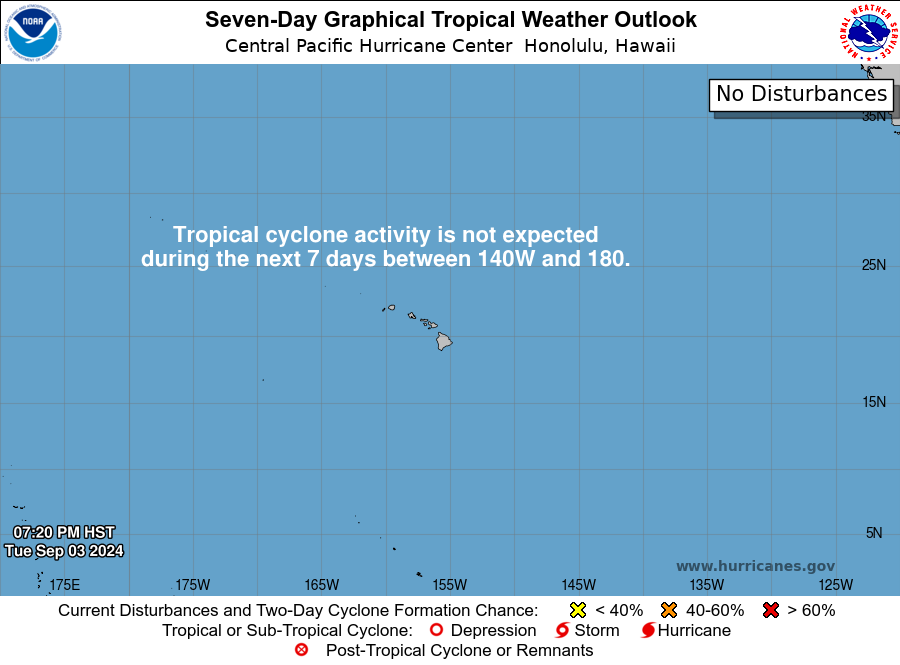
Hawaii satellite imagery:

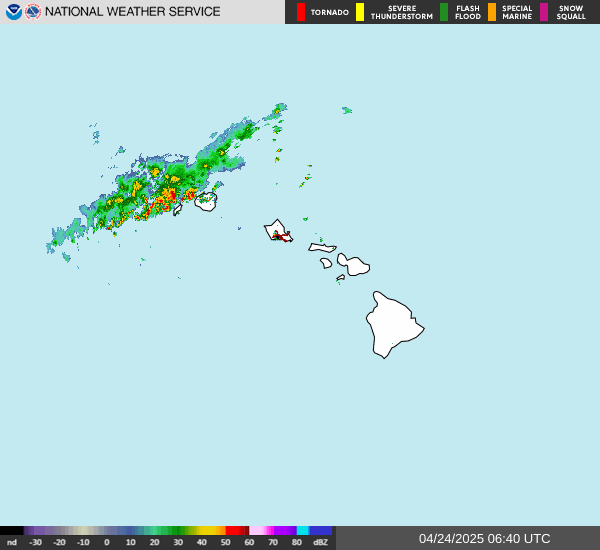
West Pacific:
Global tropical activity:
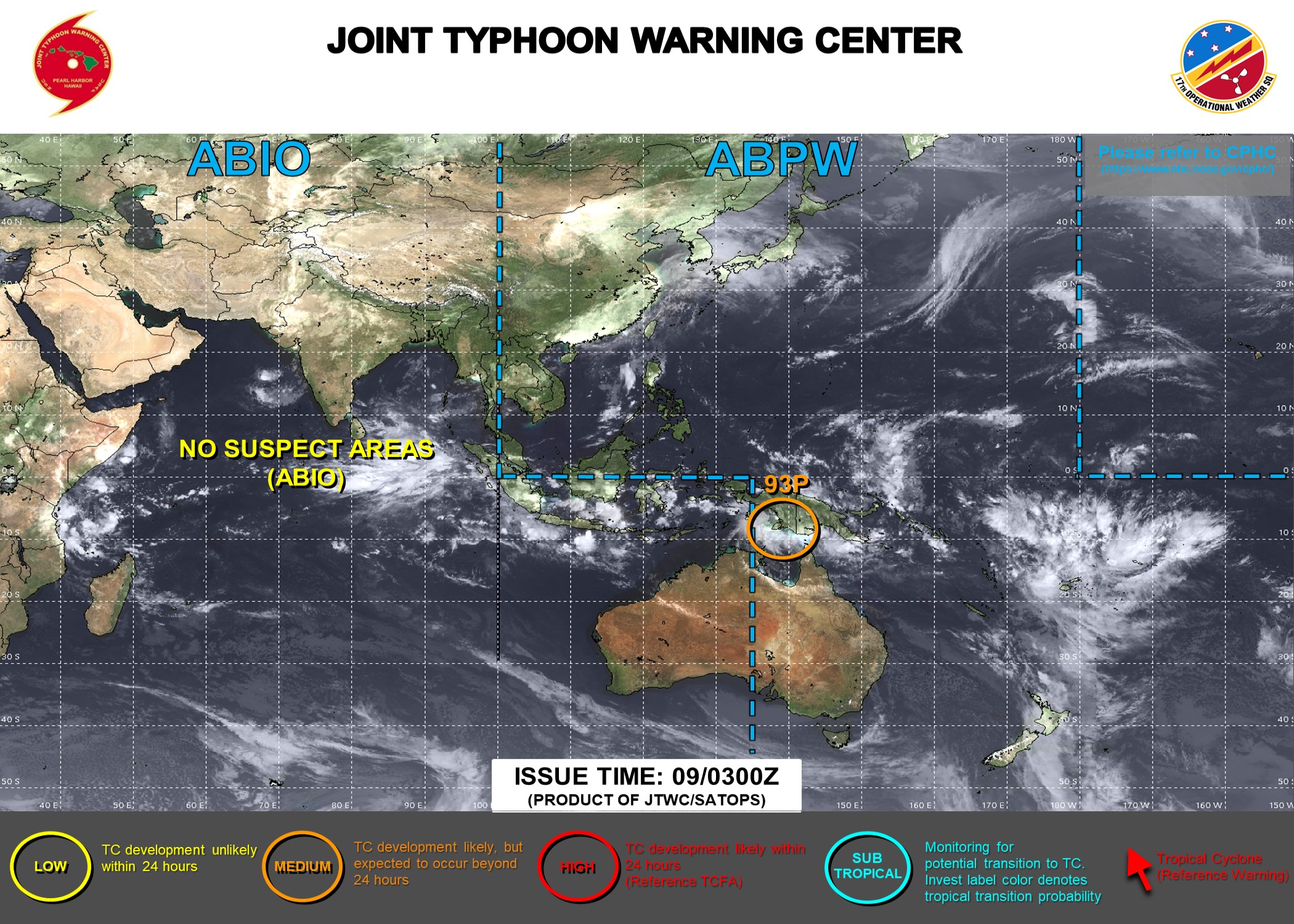
“Mun”:

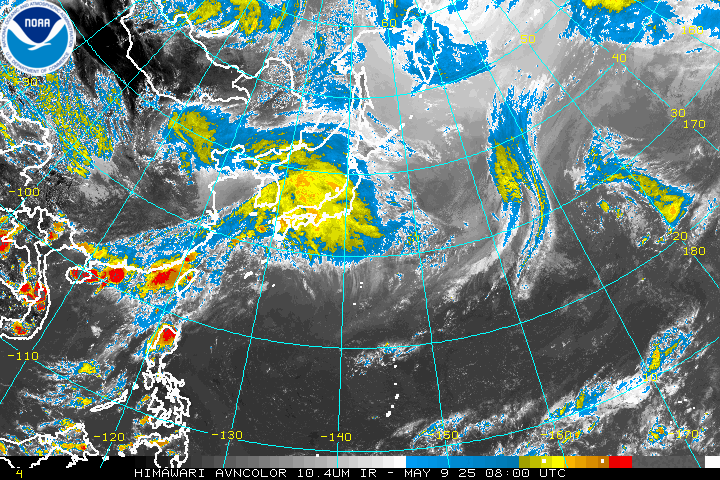
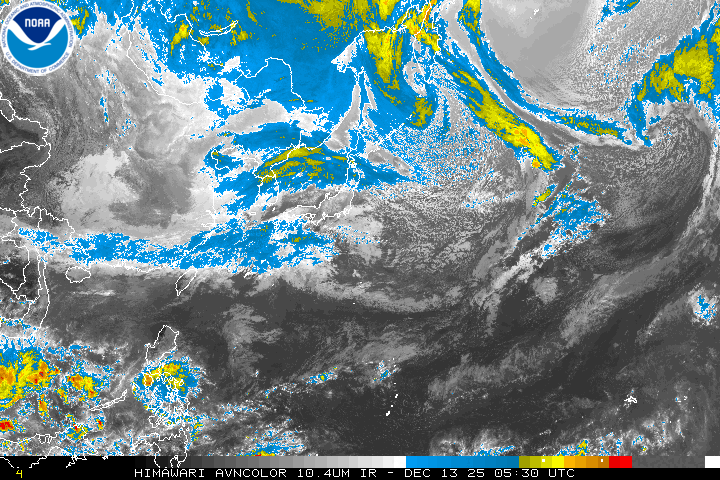
Cox Media Group


